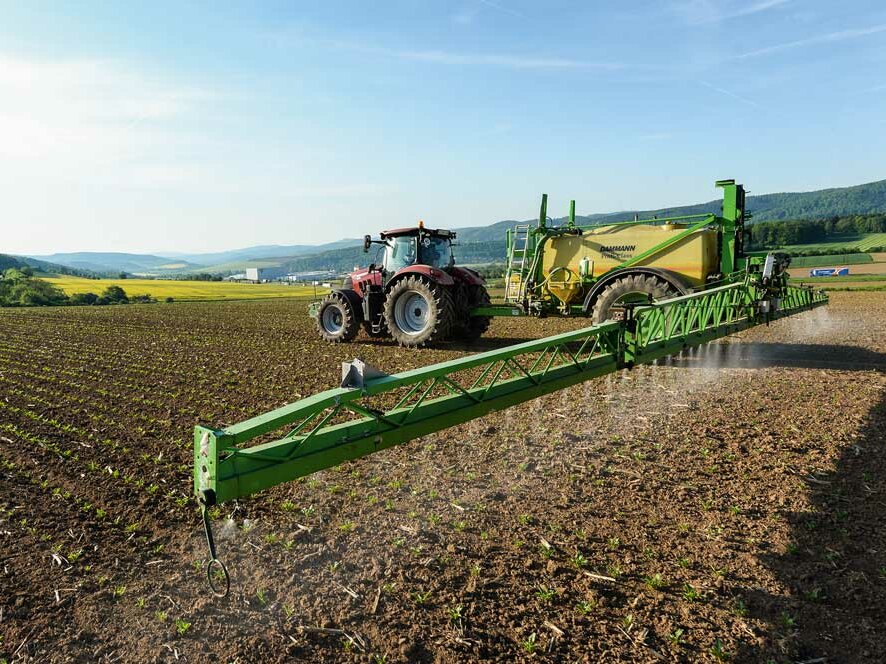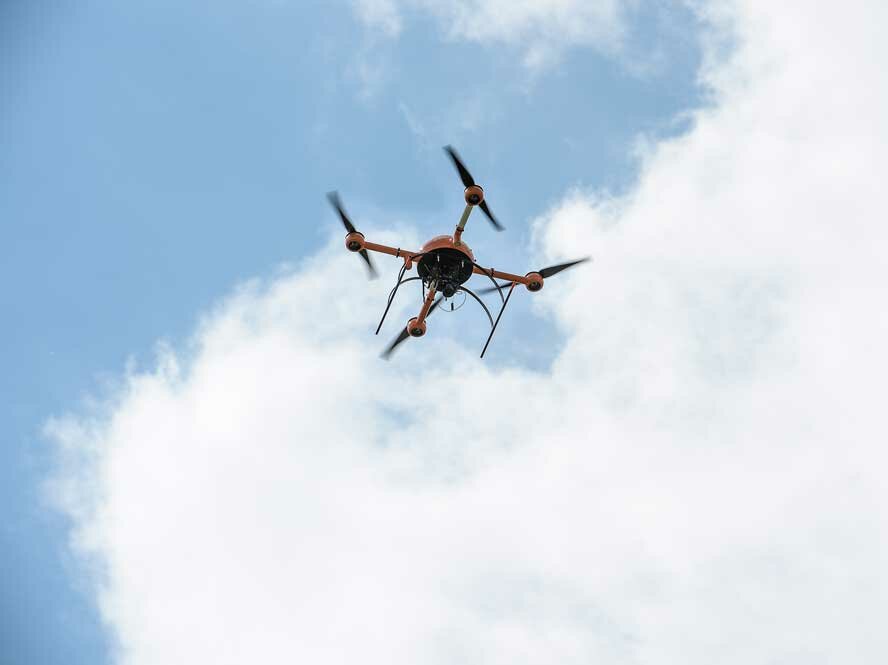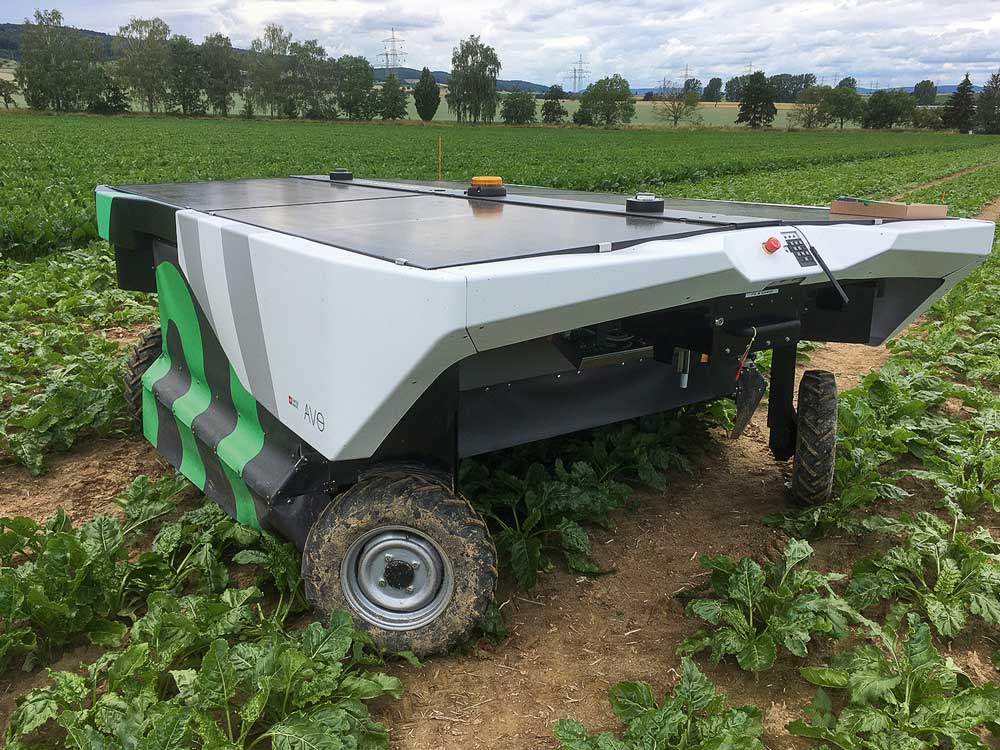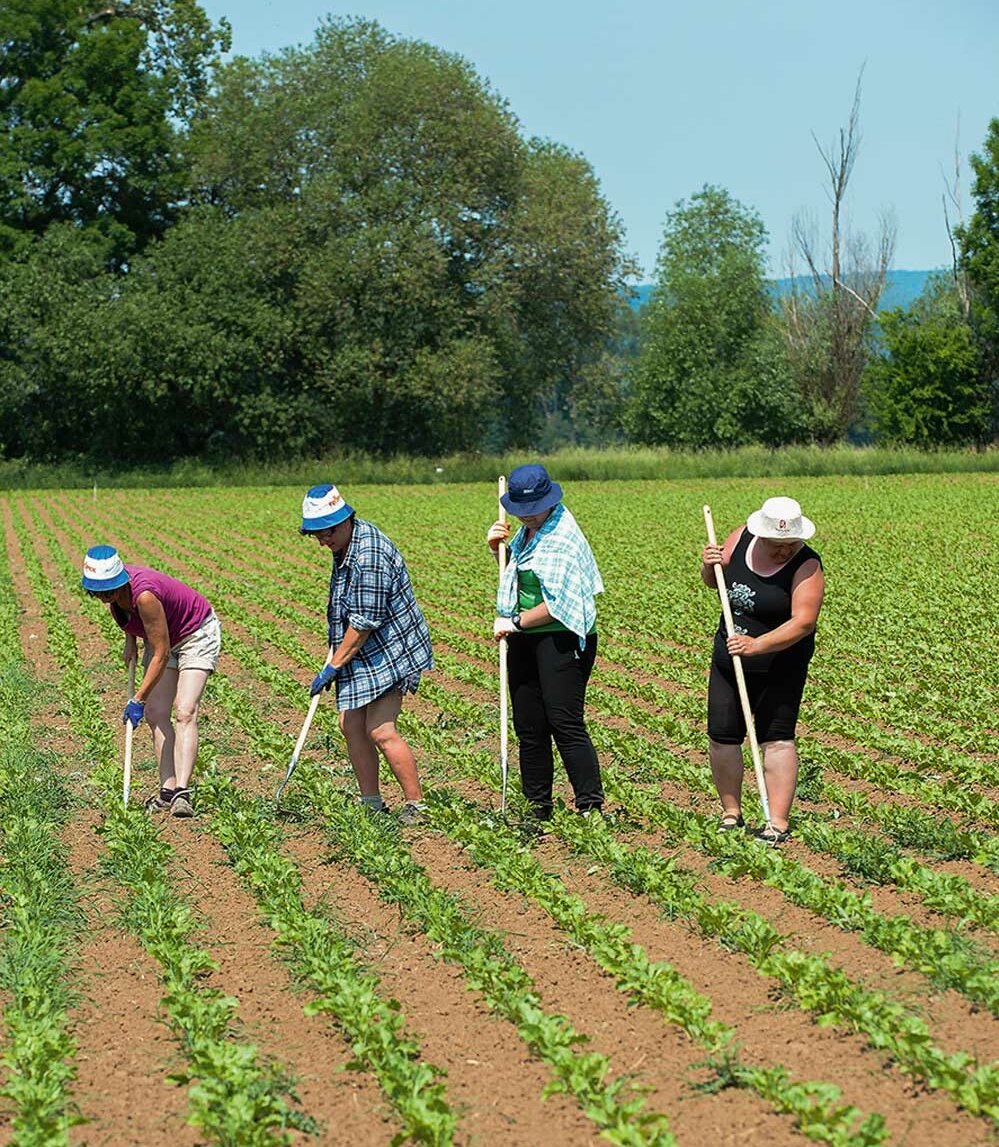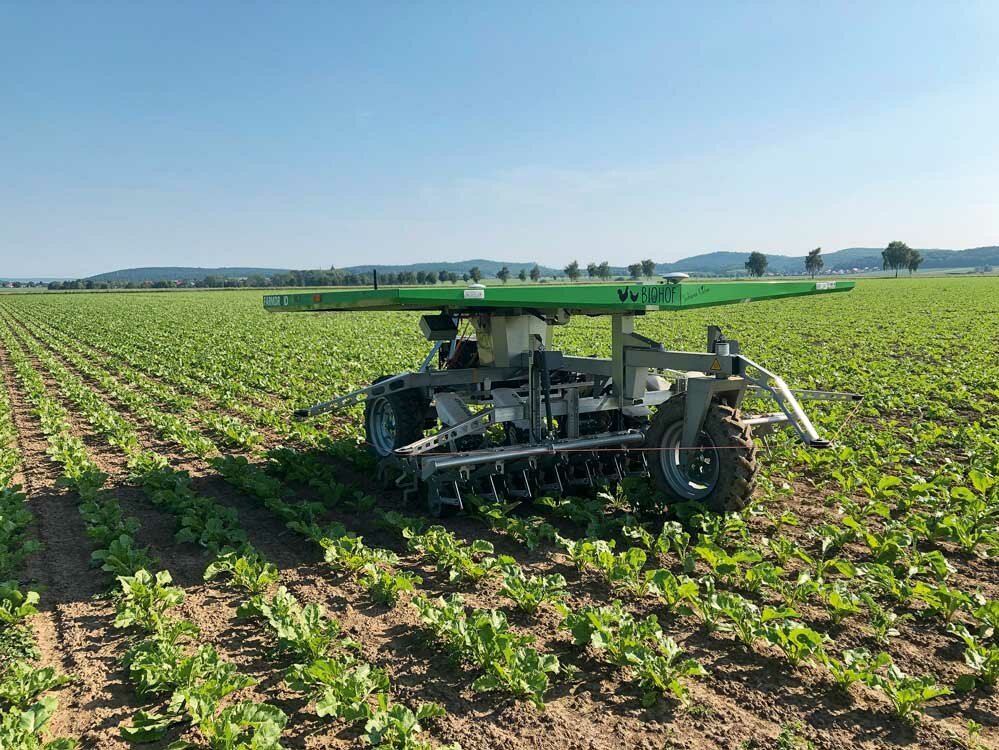Saving herbicides - Targeting weed plants more effectively
By Marwin Hampe, Thünen Institute for Agricultural Technology, Braunschweig
The European Commission's farm-to-fork strategy states it clearly: the use of plant protection products and the risks they pose are to be halved by 2030. At the same time, we are seeing the elimination of active substances and increasing resistance among weeds and harmful organisms. And last but not least, the costs for technology and inputs continue to rise.
The great challenge is to reduce the expenditure for crop protection to such an extent without having to compromise on efficiency. There are various approaches to this, from breeding to crop rotation management, new cultivation and alternative control methods to technical innovations. The latter, with their toolbox of digital technologies, already offer interesting solutions today.
Digital crop protection using the example of sugar beet
For the analysis of digital innovations in crop protection, we will first concentrate on sugar beet in this article. After all, sugar beet is one of the most intensive crops in classical arable farming (excluding vegetables) in terms of weed management. Moreover, there are already promising prototypes for this crop, including the first market-ready products. In a second step, we will examine the extent to which advantages can then also be achieved in rape with such devices.
In conventional methods, these are exclusively chemical methods; in the organic farming system, they are classically purely mechanical solutions. There are certainly other alternative methods such as laser or electrical technology. However, these are still at a very early stage of development. It is not yet possible to assess whether they will actually reach practical maturity. In addition, electro-technology is mainly seen as an alternative to total herbicides or potato seed treatment. The situation is different with combined methods such as band spraying, which are already in use in practice.
In this article, the focus is on digital innovations in crop protection. As the technologies for precise weed management are still mostly in the prototype stage, valid information from agricultural practice is lacking. Therefore, we used expert interviews, literature research, economic model calculations and a workshop to validate the information for the analyses.
Chemical processes
- Single-nozzle application: One of these new solutions is a standard field sprayer with single nozzle control, which works off a weed coverage map. The map is created using a separate operation. First, high-resolution images of the plant stand are obtained by a drone flight. With an intelligent evaluation programme, the weeds are read out and the coverage map is created. At these points, the field sprayer is to switch on and off automatically. The weeds are divided into 50 cm grids. According to initial findings, this can save on average about 50 % of the previous herbicide expenditure in sugar beet cultivation per pass. However, the first NAC should still be carried out over the entire area in order to remove the initial weed pressure. Therefore, a total of four treatment measures does not save half of the funds, but only just under 40 %. The combination of prior weed collection and non-area spray treatment reduces herbicide costs considerably. Yet, there are acquisition costs totalling 120 000 € for a 27 m trailed field sprayer and the additional drone flight of 45 €/ha in the season. Nevertheless, there is the potential to reduce the total process costs of weed control by 60 €/ha.
- Spot Spraying: Another method for precise weed control is the spot application of crop protection agents, known as spot spraying. Here, individual weeds are detected simultaneously in one pass and sprayed with up to 26 nozzles per running metre of working width. This high precision in individual plant detection and treatment makes it possible to reduce the amount of herbicide by 70 % under initial practical conditions. Here, too, the first NAK has so far been carried out on the beet with an area application. In total, 50 % of herbicides can be saved with the spot spraying method without having to compromise on efficiency.
Attachment or robot
This technology is currently being used on a trial scale as an implement with a working width of up to 6 m or as an autonomous field robot variant with a working width of 2 to 3 m. Outputs of 2.5 % are then possible. Outputs of 2.5 ha or, for the autonomous variant, 0.5 ha per hour can then be achieved. This is nowhere near the performance that is usual in practice when applying crop protection. However, the application time can be extended by reducing the risk of drift due to the wind-protected design and very short application distances to the target site. Thus, this technology offers the prerequisites to potentially achieve the goals of the farm-to-fork strategy for weed control in sugar beet already today. However, these are devices that would have to be purchased and utilised specifically for the crop. The full utilisation in sugar beet is 180 ha per year for the tractor-bound and 70 ha for the autonomous Spotspray variant. Then an economic advantage of between 60 € and 40 € per hectare can be achieved in the weed management of conventional sugar beet.
Operation in oilseed rape
Due to the high workload in sugar beet cultivation in spring, a further application window for the machines would only be possible in autumn. This is when the most important weed control measures take place in winter rape. In this crop, weed cover cards and spot spraying can be used as well. This is because the weeds can be reliably detected by the image recognition programmes. Experts say that the new technologies can be used in at least one application of two passes if the active ingredients are leaf-active. So here, too, we have calculated with an area-wide standard measure as well as the average savings potential of the new technologies (50 % weed card and 70 % spot spraying). This means that between a quarter and a third of the herbicide expenditure in oilseed rape can be reduced. However, the savings potential is less than in the intensively managed crop of sugar beet. Therefore, although plant protection products can be saved, the economic efficiency of the new methods is no better than with area spraying.
On the other hand, a further degression of fixed machine costs in sugar beet cultivation is possible through the additional utilisation of machines in rape. This would particularly benefit the autonomous field robot with its high fixed costs. This could reduce the process costs by a further €30/ha. Overall, a further utilisation of the machines in rape could achieve an advantage in sugar beet of up to 70 €/ha compared to the usual area spraying.
Problem in cereals
In cereal cultivation, a profitable use of these new technologies is not yet foreseeable. It currently fails in particular due to the targeted detection or differentiation of weeds from the cereal plants in the early growth stage.
Single plant recognition opens up new possibilities
It would be possible to work more specifically according to damage thresholds. It would also be possible to decide on treatment according to the specific biodiversity performance of the non-crop plants. Not every thistle or cornflower in the sugar beet would then be controlled if it were important for a butterfly species in the region that is particularly worthy of protection. However, the information to make such species-specific regulatory decisions is lacking so far.
Mechanical methods
Precision hoeing: Mechanical methods for weed control are precision hoes that can hoe both between and within the crop row. Targeted hoeing is achieved either by image recognition of the crop or by geo-referenced seed placement. We have analysed the latter method as an autonomous field robot variant. It allows a very early hoeing pass already in the pre-emergence stage, but is very limited in performance due to the very low operating speed of less than 1 km/h. Therefore, the six-row hoeing robot would already be fully utilised with 17 ha of sugar beet cultivation area per year under the conditions of the possible field operation days in the Hildesheimer Börde region.
Camera-controlled hoe: The camera-controlled precision hoe doubles the output capacity for the same working width. However, it completely ties up one tractor and manpower during the season. The potential of the two new hoeing technologies lies in the avoidance of manual labour hours for rechecking the weeds. Automatic and precise hoeing right up to the crop can save an average of around 70 % of the working time and thus the largest cost factor in organic sugar beet cultivation.
In the previous standard method with a row hoe, about 200 working hours per hectare are required on average over the years. This savings potential outweighs the strongly increased machine costs, which are primarily triggered by the high purchase prices of over 80,000 €. Nevertheless, it is possible to halve the total process costs for weed control in organic sugar beet cultivation with the new technologies.
Low area output is critical
However, the success of the application depends on the conditions on site. This is because the precision hoes have had a rather easy time in their testing with the past dry years for mechanical weed control. A critical factor here is the low output per unit area, which can have a serious impact on profitability in narrow operating windows when many hours of manual labour are required. Therefore, the technology still has to prove itself under difficult conditions with lower control successes, as well as its robustness and operational reliability. The latter is especially true for autonomous machines with sensitive electronic and software functions. Moreover, the total costs of purely mechanical processes are still almost four times as high as those of chemical ones. For this reason alone, conventional sugar beet cultivation is still dependent on chemical crop protection agents, especially foliar-active agents for individual plant treatment.
Outlook
Further development progress can be expected in the field of digital crop protection technology. This will lead to optimisations and performance increases as well as further application possibilities and thus to better solutions for widespread practice. Manufacturers and researchers are currently putting a lot of work into this. For example, when using field robots, the time required to rectify faults is currently still considerable. The current digital technologies are only a small building block in this area to achieve the goals of the farm-to-fork strategy. Further approaches, such as breeding or alternative cultivation methods, are needed for the time being to make this a success.
(The investigations are being carried out as part of the DigiLand project (a cooperation between the Thünen Institute and the VDI), funded by the BMEL via the BLE.)



